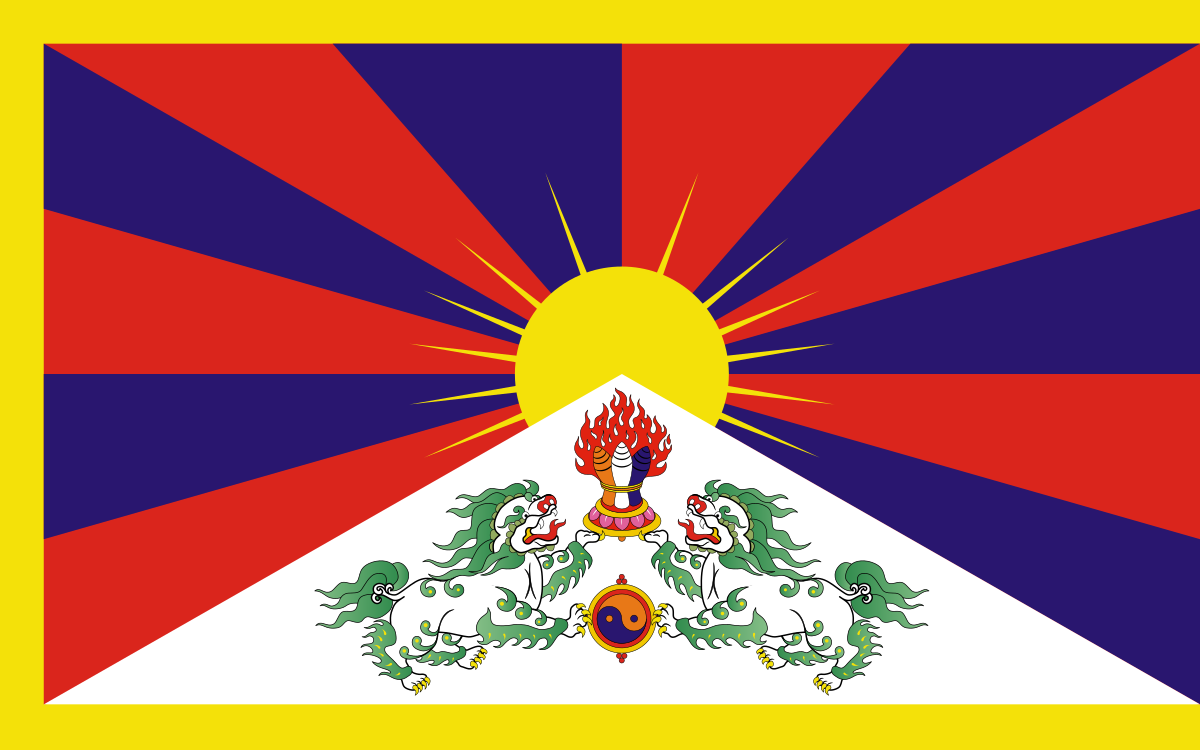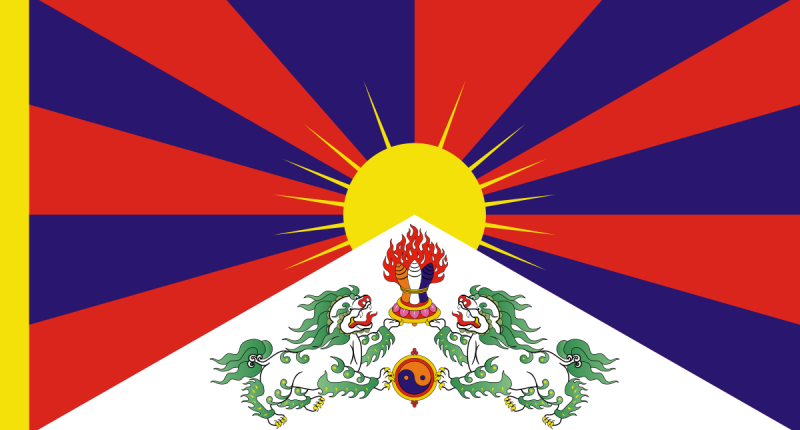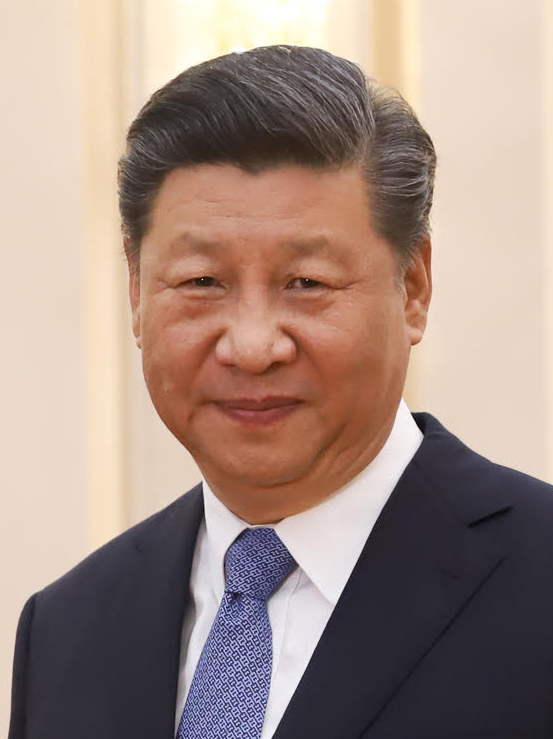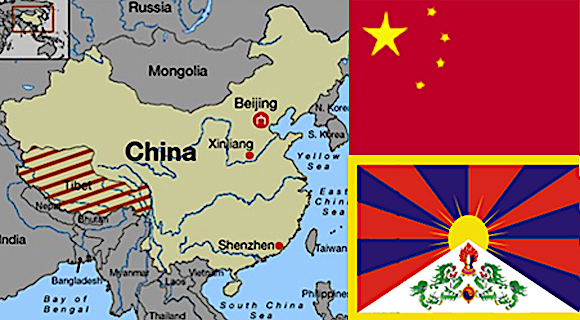By: Tsewang Dorji – Research Fellow of the Tibet Policy Institute
Today is the 62nd anniversary of the 1959 Tibet National Uprising Day – the Chinese military at the time brutally cracked down on Tibetan’s nationwide peaceful protests against the Chinese Communist Party’s militarily occupation of Tibet on the 10th March 1959.
Subsequently, His Holiness the 14th Dalai Lama and more than 80,000 Tibetans fled to India seeking political asylum.
And the Chinese occupation of Tibet that has followed has for decades posed geopolitical ramifications towards the South Asian region of the Himalayas.

Since the invasion of Tibet and its disappearance as a traditional buffer state between India and China in 1950, the two Asian giants of the region faced each other for the first time in history along the Indo-Tibetan border.
The forceful changing of the guard from the Tibetan government to the resurgent Communists led to the conversion of the Indo-Tibetan border into a Sino-Indian border that has created an unprecedented and enduring geopolitical tension in the Himalayas.
Geographically as well as strategically, the mountainous regions of Tibet are the first line of the defense for India.
They ultimately safeguard the 3,488 kilometer long border from Ladakh to Arunachal Pradesh.
The present Chinese leadership now considers Tibet issue a core of the Chinese national interest.
During the 6th and 7th Tibet Work Forum, Xi Jinping dictated the geopolitical importance of Tibet in securing Chinese national security and unification.
As per Xi Jinping’s strategy for governing Tibet in the new era put forward with the 10 “Musts”, the second ‘must’ is: “We must adhere to the strategic thinking of governing the country and governing the border, and stabilizing Tibet first”.
The Tibet Work Forum meeting is the highest decision making body dealing with Tibet affairs.
The current Chinese strategy of “stabilizing Tibet first” is the updated stratagem of Mao’s strategy of China’s palm and the five-fingers and Chinese nationalists’ perception of Tibet as a backdoor to China in the early 20th century.
These Himalayan five-fingers which China has claimed are closely attached to India.
Excluding Nepal and Bhutan, the remaining three fingers are currently under the jurisdiction of India.
Moreover, Bhutan has no diplomatic relations with China, but Nepal is moving closer to Beijing.
Therefore, geopolitically, any Chinese aggression across the Himalayas is intolerable to India’s national security.
Professor Dawa Norbu noted that up to 1947, there were only 75 border police who safeguarded the Indo-Tibet border which stretched from Ladakh to Arunachal Pradesh.
Today, China has deployed nearly 50,000 soldiers to the Indo-Tibet border areas.
At the same time, India is likely to add another 35,000 Indian troops on its northern borders.
Along with these massive military personnel deployments in the Himalayas, both heavy duty, and light combat weapons are also being deployed in the high attitude Indo-Tibet border area.
The heavy military expenditure on the world’s highest frozen border is thus of significant cost for both India and China. According to a SIPRO report, India’s military expenditure was $71.1 billion in 2019 which India ranked the third highest military spender in the world after the U.S. and China.
Tsewang Rinzin, a Ph.D. research scholar and fellow at Columbia University, has shown that Indian tax-payers annually contribute to India’s defense expenditure at great expense, saying, “The fact that India has a shared border with China due to the Chinese occupation of Tibet and subsequent signing of the Panchsheel Agreement costs Indian tax-payers about US$ 7.16 billion annually, on average. This amount was a little over 10% of India’s total military spending in 2019, i.e., US$ 71.1 billion. Adding up this cost from 1955 (the year after the Panchsheel agreement) to 2019, without adjustments for inflation and exchange rate fluctuations, for over 60 years, the occupation of Tibet by China has cost the Indian government US$ 462.8 billion” (Rinzin 2020).

C: https://commons.wikimedia.org/wiki/User:Antoinetav
With this strategic cost and management reference, the centrality of Tibet in terms of demilitarization of Tibet Plateau is an ultimate resolution for resolving the Sino-Indian dispute over the Indo-Tibet border.
The Indian national leader, George Fernandes rightly justified the significance of making Tibet a zone of peace between India and China: “If Tibet becomes a zone of peace, free from Chinese troops and nuclear weapons, there will be no reason for India to maintain a large army on the Himalayan heights. This would immediately enable both India and China to reduce their military expenditure and use the money thus saved for economic development. The countries of Europe are reducing their troop, and in the process, their military expenditure. Why should not India and China follow a similar course?” (Fernandes 1998) .
And renowned international scholars on Tibet and China such as Professor Mohan Malik, Professor Dawa Norbu and strategist Brahma Chellaney argue that Tibet lies at the heart of Sino-Indian relations.
For making of Tibet a zone of peace, the centuries old status of Tibet as a zone of peace has to be restored between India and China.
The idea of making Tibet a modern day zone of peace was initially proposed by His Holiness the 14th Dalai Lama in the 1980s.
This proposal is a win-win resolution for ending the India-China conflicts.
For instance, Britain and Russia signed a convention in 1907, over Afghanistan, Persia and Tibet – creating a zone of peace between the Russian and British Empires in Asia.
At the time, Russia and Britain were the most powerful empires in the world.
This convention ensured peace for 43 years between the two superpowers.
Today, India and China are the two largest countries in Asia.
In having peace and stability between India and China, the Anglo-Russian convention of 1907 is a good reference.
Another case dates to 1975, when Nepalese King Birendra proposed making Nepal a peace zone between the two Asian giants.
It was formally declared by Nepal’s Prime minister S.B. Thapa in 1982.
China supported this initiative. Therefore, if India and China mutually look forward to bringing peace and stability in Asia, making Tibet a zone of peace is the ultimate solution for maintaining friendships and peaceful co-existence between India and China.

Since the Chinese invasion of Tibet in 1950, the Chinese Communist Party’s strategic perception towards Tibet and the Himalayas has remained intact.
But India, along with the world democratic alliance, have the potential to bring China to the negotiating table to make Tibet a zone of peace by securing India’s own northern borders and checking China’s encirclement (of) India policy.
Because China’s strategic perception of Tibet is still as China’s palm and Ladakh, Nepal, Sikkim, Bhutan and Arunachal Pradesh as the five-fingers of Tibet – this may work.












Comments are closed.